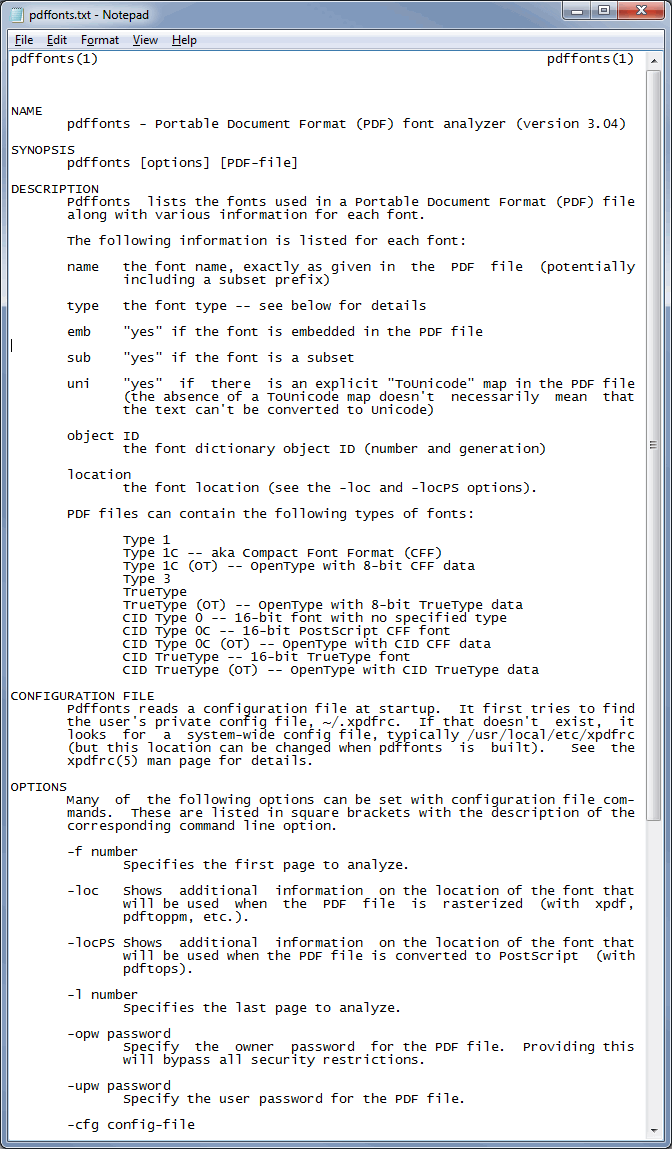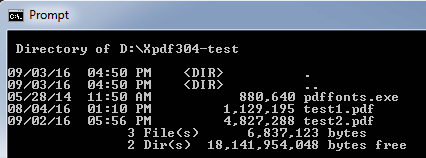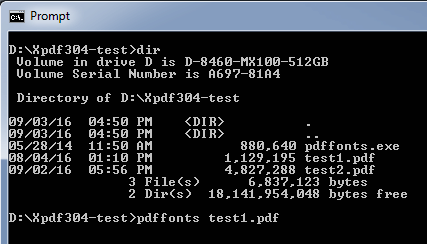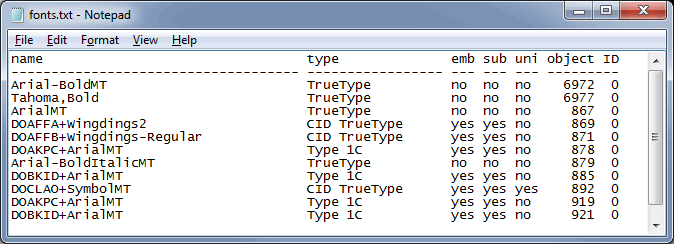1. Download the software
You may have already downloaded and unzipped the
Xpdf tools while watching the
first video in the Xpdf series, but if you haven't, then visit the
Xpdf website. Click the Download link and then click the pre-compiled Windows binary ZIP archive to download the utilities for Windows.
![Step1]()
2. Locate the documentation folder for the Xpdf utilities
Go to the folder where you unzipped the downloaded ZIP file and find the
doc folder.
![Step2]()
3. Read the documentation for the PDFfonts tool
Go into the
doc folder and find the plain text file called
pdffonts.txt.
Open it with any text editor, such as Notepad, and read it. This is the documentation for the
PDFfonts tool.
![Step3]()
4. Set up a test folder
Create a test folder.
Copy
pdffonts.exe from the unzipped
bin32 folder into your test folder.
Copy a couple of sample PDF files into your test folder, preferably ones with many different fonts.
![Step4]()
5. Set up a command prompt for testing
Open a command prompt window.
Navigate to your test folder.
Issue a DIR command in the command prompt to be sure that only the PDFfonts executable and the sample PDF files are in it.
![Step5]()
6. Run the PDFfonts utility
Issue the following command in the command prompt:
pdffonts NameOfYourTestFile.pdf
If you receive the following error messages, ignore them:
Config Error: No display font for 'Symbol'
Config Error: No display font for 'ZapfDingbats'
![Step6]()
7. Observe the output from PDFfonts
![Step7]()
8. Run the PDFfonts utility again, but this time redirect the output to a file
Issue the following command in the command prompt:
pdffonts NameOfYourTestFile.pdf>fonts.txt
![Step8]()
9. Verify that the output of the PDFfonts utility went into the file
Open the text file created in the previous step with any text editor, such as Notepad.
![Step9]()
10. View the fonts in a PDF editor/reader/viewer
You may, of course, show the fonts in a PDF editor/reader/viewer, such as Adobe Acrobat or Adobe Reader, usually via
File>Properties>Fonts, but they are not command line tools and there is no easy way to get the information into a file.
![Step10]()
That's it! If you find this video to be helpful, please click the
thumbs-up icon below. Thank you for watching!
















